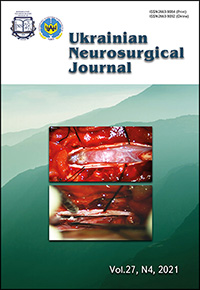Dorsal spine intradural extramedullary hemangiopericytoma: a case report
DOI:
https://doi.org/10.25305/unj.234950Keywords:
spinal hemangiopericytoma, solitary fibrous tumor (SFT), intradural extramedullary lesionAbstract
Introduction: Hemangiopericytomas are rare CNS Neoplasms constituting <1% of CNS tumours. They are more commonly seen in cranium than in spine where they present as Intradural extramedullary in location. They rarely metastasize to Lung and Bone.World Health Organization Classification of Tumors of the Central Nervous System (CNS WHO) assigned the combined term solitary fibrous tumor/ hemangiopericytoma (SFT/HPC) to such lesions in 2016 due to their same genetic makeup.
Case report: Our case is about a 61-year-old diabetic male who presented with insidious onset, gradually progressive thoracic backache and asymmetric weakness with tightness and numbness of both lower limbs for last 6 months with no sphincter incontinence and bed bound for last 15 days. Clinically he had asymmetric spastic paraparesis of lower limb. His MRI Dorsal spine showed a 1.5 ґ 2 cm heterogeneously contrast enhancing Intradural lesion at D6-D7 compressing the cord from dorsolaterally with extensive cord edema from C5 to L2. Preoperative diagnosis of Meningioma/ Metastasis was made and patient underwentD5-D7 laminectomy and tumour excision. Intraoperative findings, there was no dural attachment, there were multiple tortuous blood vessels overlying greyish pink, fleshy, suckable, highly vascular, capsulated tumor posterolateral to cord. The superior aspect of tumor was adherent to cord with no clear interface. Tumor was seen separate from Left D7 nerve root. Post operatively patient improved symptomatically and neurologically. His HPE was suggestive of Hemangiopericytoma WHO Grade II (IHC markers CD34 and CD 31 was positive and KI 67% index of 10-15%). Patient has been on follow up and planned for metastatic workup.
Conclusion: Spinal Hemangiopericytoma are rare disease with nonspecific radiological features making preoperative diagnosis difficult. Differential diagnosis of hemangiopericytoma should be kept in case of atypical and high - grade radiological features. Gross total resection without compromising the neurological status should be the goal to prevent local recurrence. Proper consensus regarding the follow up and adjuvant therapies of spinal Hemangiopericytoma are still lacking.
References
Stout AP. Hemangiopericytoma; a study of 25 cases. Cancer. 1949 Nov;2(6):1027-54, illust. doi: 10.1002/1097-0142(194911)2:6<1027::aid-cncr2820020609>3.0.co;2-r
Horten BC, Urich H, Rubinstein LJ, Montague SR. The angioblastic meningioma: a reappraisal of the nosological problem. Light-, electron-microscopic, tissue, and organ culture observations. J Neurol Sci. 1977 Apr;31(3):387-410. doi: 10.1016/0022-510x(77)90217-9
Goellner JR, Laws ER Jr, Soule EH, Okazaki H. Hemangiopericytoma of the meninges. Mayo Clinic experience. Am J Clin Pathol. 1978 Sep;70(3):375-80. doi: 10.1093/ajcp/70.3.375
Ecker RD, Marsh WR, Pollock BE, Kurtkaya-Yapicier O, McClelland R, Scheithauer BW, Buckner JC. Hemangiopericytoma in the central nervous system: treatment, pathological features, and long-term follow up in 38 patients. J Neurosurg. 2003 Jun;98(6):1182-7. doi: 10.3171/jns.2003.98.6.1182
Espat NJ, Lewis JJ, Leung D, Woodruff JM, Antonescu CR, Shia J, Brennan MF. Conventional hemangiopericytoma: modern analysis of outcome. Cancer. 2002 Oct 15;95(8):1746-51. doi: 10.1002/cncr.10867
Shirzadi A, Drazin D, Gates M, Shirzadi N, Bannykh S, Fan X, Hunt L, Baron EM, King WA, Kim TT, Johnson JP. Surgical management of primary spinal hemangiopericytomas: an institutional case series and review of the literature. Eur Spine J. 2013 May;22 Suppl 3(Suppl 3):S450-9. doi: 10.1007/s00586-012-2626-z
Liu HG, Yang AC, Chen N, Yang J, Qiu XG, Zhang JG. Hemangiopericytomas in the spine: clinical features, classification, treatment, and long-term follow-up in 26 patients. Neurosurgery. 2013 Jan;72(1):16-24; discussion 24. doi: 10.1227/NEU.0b013e3182752f50
Wu W, Shi JX, Cheng HL, Wang HD, Hang CH, Shi QL, Yin HX. Hemangiopericytomas in the central nervous system. J Clin Neurosci. 2009 Apr;16(4):519-23. doi: 10.1016/j.jocn.2008.06.011
Zhang P, Hu J, Zhou D. Hemangiopericytoma of the cervicothoracic spine: a case report and literature review. Turk Neurosurg. 2014;24(6):948-53. doi: 10.5137/1019-5149.JTN.8299-13.1
Ottenhausen M, Ntoulias G, Bodhinayake I, Ruppert FH, Schreiber S, Förschler A, Boockvar JA, Jödicke A. Intradural spinal tumors in adults—update on management and outcome. Neurosurgical review. 2019 Jun;42(2):371-88. doi: 10.1007/s10143-018-0957-x
Fukui T, Kawaguchi Y, Kawamoto T, Hitora T, Yamamoto T, Akisue T, Kushida Y, Haba R. Solitary Fibrous Tumor arising in extremity: A report of two cases with 201-Thallium Scintigraphic and PET findings. Cancer Therapy. 2008 Dec 1;6(2).
Fargen KM, Opalach KJ, Wakefield D, Jacob RP, Yachnis AT, Lister JR. The central nervous system solitary fibrous tumor: a review of clinical, imaging and pathologic findings among all reported cases from 1996 to 2010. Clin Neurol Neurosurg. 2011 Nov;113(9):703-10. doi: 10.1016/j.clineuro.2011.07.024
Mohammadianpanah M, Torabinejad S, Bagheri MH, Omidvari S, Mosalaei A, Ahmadloo N. Primary epidural malignant hemangiopericytoma of thoracic spinal column causing cord compression: case report. Sao Paulo Med J. 2004 Sep 2;122(5):220-2. doi: 10.1590/s1516-31802004000500009
Downloads
Published
How to Cite
Issue
Section
License
Copyright (c) 2021 Tamajyoti Ghosh, Ajay Sebastian Carvalho

This work is licensed under a Creative Commons Attribution 4.0 International License.
Ukrainian Neurosurgical Journal abides by the CREATIVE COMMONS copyright rights and permissions for open access journals.
Authors, who are published in this Journal, agree to the following conditions:
1. The authors reserve the right to authorship of the work and pass the first publication right of this work to the Journal under the terms of Creative Commons Attribution License, which allows others to freely distribute the published research with the obligatory reference to the authors of the original work and the first publication of the work in this Journal.
2. The authors have the right to conclude separate supplement agreements that relate to non-exclusive work distribution in the form of which it has been published by the Journal (for example, to upload the work to the online storage of the Journal or publish it as part of a monograph), provided that the reference to the first publication of the work in this Journal is included.









